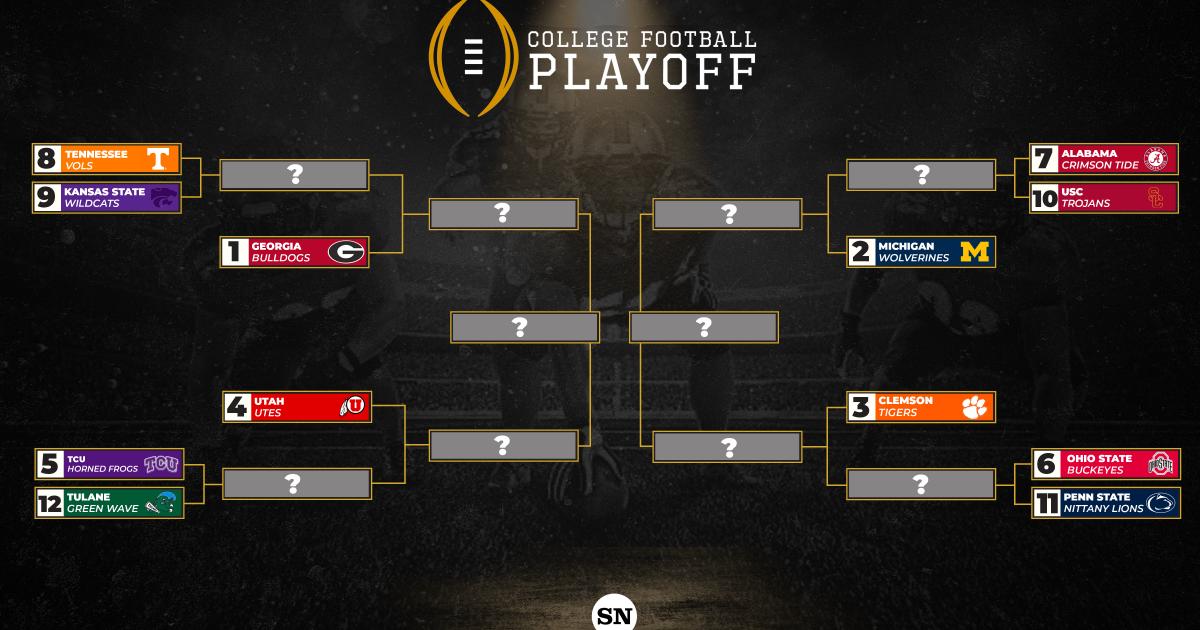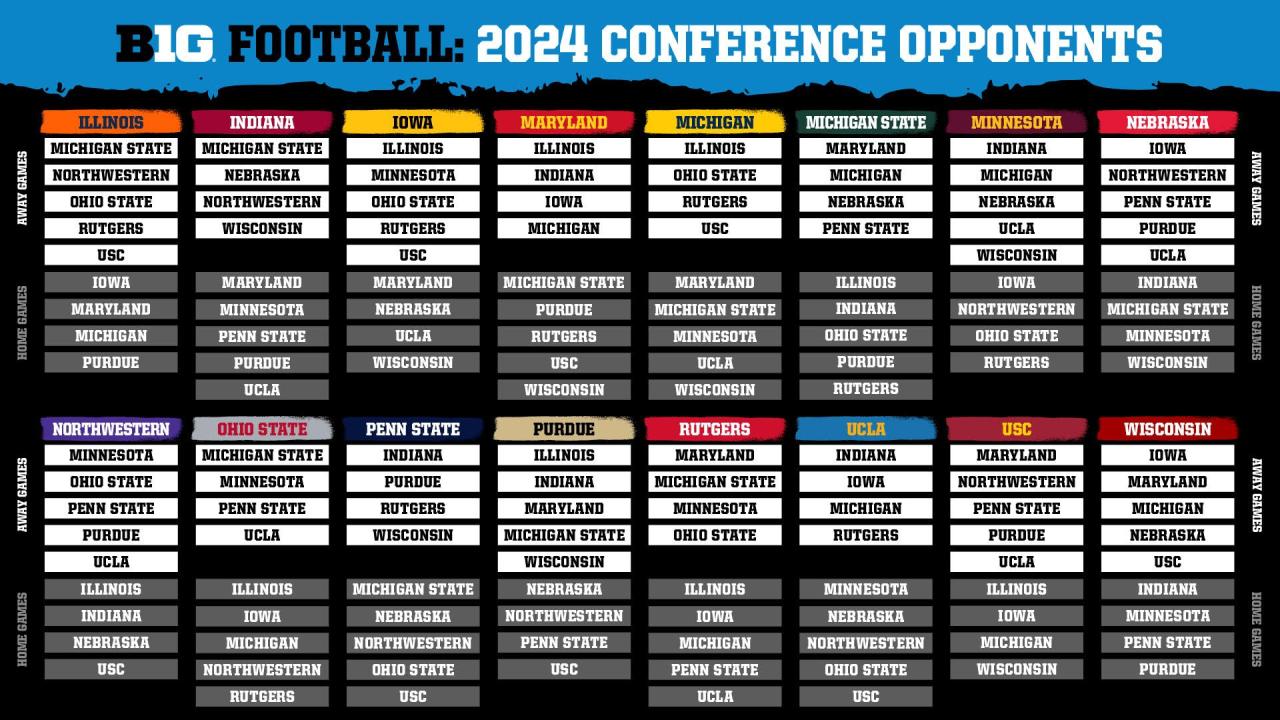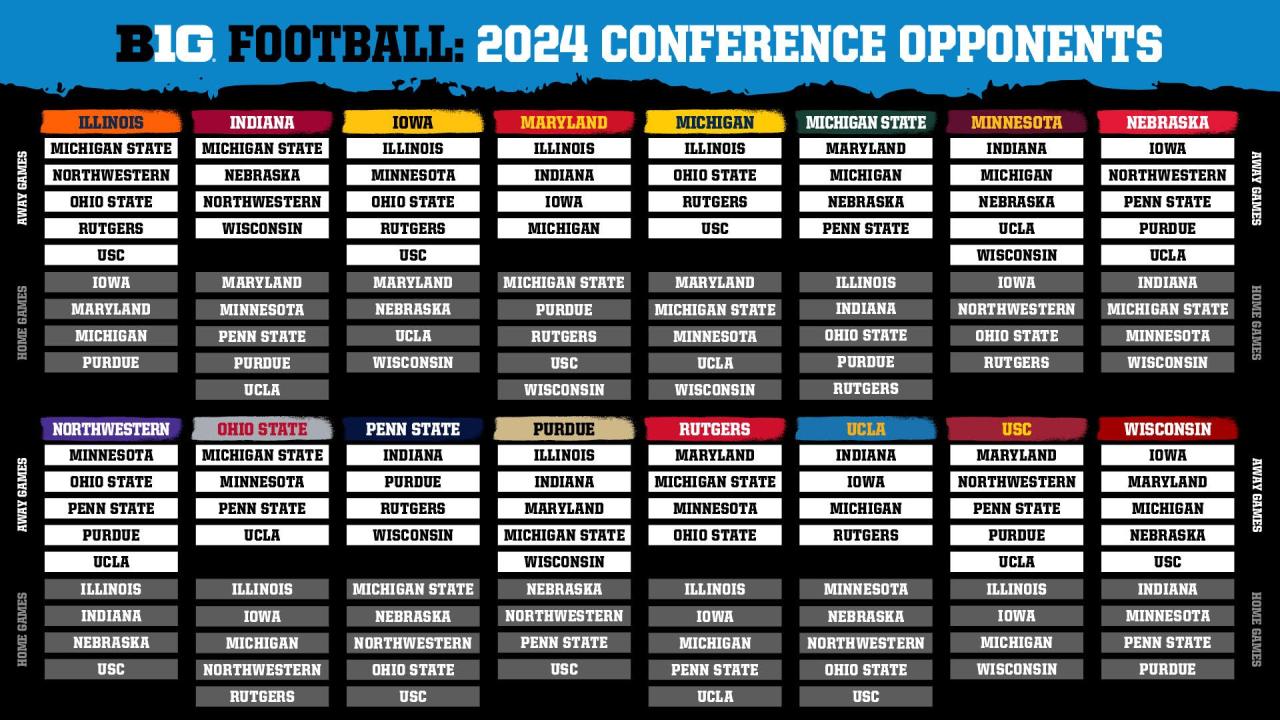2024-25 College Football Playoff: What’s next for the eliminated? The dust has settled on another thrilling, yet heartbreaking, college football season. While some teams celebrated their advancement, others faced the sting of elimination. This analysis delves into the aftermath, examining the factors contributing to their downfall, exploring their recruitment strategies for the future, and considering potential changes to the playoff format itself.
We’ll analyze individual team performances, assess their recruiting needs, and discuss the broader implications of the playoff’s structure.
From dissecting pivotal moments that sealed their fate to projecting their future success based on recruiting and player development, we aim to provide a comprehensive overview of what lies ahead for these eliminated teams. We will also consider the impact of these eliminations on the remaining contenders and explore potential reforms to the playoff system itself.
Impact of Eliminated Teams on the Remaining Contenders
The elimination of several top-ranked teams significantly alters the landscape of the remaining College Football Playoff contenders. Their absence impacts strategic approaches, rankings, coaching decisions, and ultimately, player performance in the upcoming games. This section will analyze these impacts, categorizing the remaining teams based on their projected advancement probability.
Shifting Strategies and Rankings
The unexpected exits of prominent teams force the remaining contenders to reassess their strategies. Teams that previously focused on securing a specific ranking now face a different competitive environment. For example, a team initially aiming for a top-four spot might now adjust its game plan to secure a less competitive conference championship, prioritizing overall win-loss record over direct head-to-head matchups against stronger opponents.
Ranking implications are also significant; a team’s perceived strength is directly influenced by the teams they’ve defeated, thus the absence of a strong opponent from the field can impact their ranking even if their own performance remains consistent.
Comparative Strengths and Weaknesses
With the elimination of certain teams, the relative strengths and weaknesses of the remaining contenders become more pronounced. A team previously overshadowed by a dominant opponent might now be viewed as a serious contender. Conversely, a team relying on a strong defense might find itself facing more potent offenses without its previous top rivals in the competition. This necessitates a comprehensive evaluation of each team’s capabilities in the context of the new competitive landscape.
Coaching Decisions and Player Performance
Coaching decisions will be heavily influenced by the eliminations. Play-calling strategies might shift based on the remaining opponents’ strengths and weaknesses. Furthermore, the pressure on players will change; some might feel liberated by the absence of a perceived unbeatable opponent, while others might experience heightened anxiety facing a suddenly more competitive field. This dynamic will impact individual player performance throughout the remaining games.
Tiered Assessment of Remaining Contenders
Based on current performance and the changed competitive landscape, the remaining teams can be broadly categorized into tiers. Tier 1 comprises teams with the highest probability of reaching the final playoff games, possessing a combination of strong offense, defense, and consistent performance. Tier 2 includes teams with a realistic chance, though facing steeper challenges. Tier 3 encompasses teams with a lower probability of advancing, requiring significant upsets to reach the final stages.
The specific teams in each tier will vary depending on the current standings and upcoming match results.
Analyzing the Performances of Eliminated Teams
Understanding why certain teams failed to reach the playoff is crucial for both the eliminated teams and those remaining in the competition. A detailed analysis of their performances, identifying pivotal moments and assessing roster strengths and weaknesses, can provide valuable insights for future improvement.
Factors Contributing to Elimination
Several factors often contribute to a team’s elimination. These can include inconsistent performance throughout the season, key injuries to star players, critical coaching errors in pivotal games, and simply facing stronger opponents. For instance, a team might have a strong regular season record but falter in crucial conference championship games. Analyzing specific game scenarios, such as crucial turnovers or missed field goals, helps illustrate the fine margins that determine playoff success.
Pivotal Moments and Games
Specific games and moments often define a team’s fate. A single loss against a lower-ranked opponent, a last-minute interception, or a missed field goal can have devastating consequences. Examining these critical junctures allows for a deeper understanding of the path to success and failure in high-stakes college football.
Roster and Coaching Staff Evaluation

A thorough assessment of each eliminated team’s roster and coaching staff is essential. This involves analyzing player talent, positional strengths and weaknesses, and the overall effectiveness of the coaching strategies employed. Were there significant shortcomings in recruiting, player development, or game planning? Identifying these areas will be crucial for future improvement.
Potential for Future Success

Despite their elimination, many teams possess the potential for future success. This hinges on effective recruiting strategies, player development programs, and addressing the weaknesses identified in their past performances. The ability to learn from past mistakes and adapt accordingly will significantly influence their future competitiveness.
Recruitment and Future Outlook for Eliminated Teams: 2024-25 College Football Playoff: What’s Next For The Eliminated
The elimination from the playoff will significantly influence the recruiting strategies of the affected teams. This section explores potential recruiting targets, hypothetical recruiting classes, and overall plans for improvement.
Key Recruiting Targets
Each eliminated team will likely target specific positions and players to address their weaknesses. For example, a team with a weak offensive line might prioritize recruiting top-tier offensive linemen. This will involve identifying talented high school prospects and transferring players who fit their specific needs and overall team strategy.
The 2024-25 College Football Playoff leaves many teams wondering what’s next. For some, the focus shifts to individual player development, as seen with the incredible rise of young athletes; for instance, check out this article about a 19-year-old phenom: ‘Just ridiculous’: 19yo phenom destroys Aussie… and is on path to. This highlights the dedication and potential even outside the playoff spotlight, mirroring the perseverance needed for eliminated college teams to rebuild and return stronger next season.
Hypothetical Recruiting Classes
Based on their needs and recruiting priorities, hypothetical recruiting classes can be constructed for each eliminated team. This would involve identifying specific players, considering their position, skillset, and potential impact on the team. The composition of these classes would reflect a team’s long-term vision and strategies for improvement.
Influences on Future Recruiting Strategies
The playoff elimination will undoubtedly shape future recruiting strategies. Teams might focus on recruiting players with specific skill sets to address their weaknesses or might adjust their recruiting approach to target a different type of player. This might involve shifting their focus to specific geographic regions or altering their recruiting timelines.
Plans for Performance Improvement
To improve their performance next season, eliminated teams will need comprehensive plans. These plans should include specific strategies for improving their offense, defense, special teams, and player development. They should also incorporate a clear vision for their team’s identity and playing style.
The Playoff’s Structure and Potential Changes
The current College Football Playoff format has both strengths and weaknesses. This section discusses potential modifications and the arguments for and against expanding the playoff field.
The 2024-25 College Football Playoff has concluded, leaving many teams to consider their futures. Recruiting will be crucial for those eliminated, and the impact of this loss will undoubtedly shape their upcoming seasons. Sadly, amidst the college football news, we learned of the passing of a true legend; read more about the heartbreaking news of Baseball legend Rickey Henderson dead at 65: reports.
Returning to the gridiron, the eliminated teams now face the challenge of rebuilding and strategizing for a stronger showing next year.
Strengths and Weaknesses of the Current Format
The current format has the advantage of simplicity and clear selection criteria. However, it also faces criticism for potentially excluding deserving teams and not fully representing the diversity of strong college football programs. The limited number of playoff spots can lead to significant controversy and debate about the selection process.
Comparison with Alternative Structures
Alternative playoff structures, such as expanding the field or incorporating a ranking system that weighs various factors beyond just win-loss records, have been proposed. Each alternative structure has its own set of advantages and disadvantages, affecting various stakeholders, including the teams, conferences, and television networks.
Potential Modifications to the Playoff System
Several modifications could improve the current system. These could include adjusting the selection criteria to incorporate more factors, expanding the playoff field to include more teams, or implementing a different ranking system. The impact of each modification needs careful consideration to avoid unintended consequences.
Arguments For and Against Expanding the Playoff Field, 2024-25 College Football Playoff: What’s next for the eliminated
Expanding the playoff field is a contentious issue. There are compelling arguments both for and against it. The following table summarizes these arguments:
| Argument For Expansion | Argument Against Expansion |
|---|---|
| Provides more opportunities for deserving teams to compete for the national championship. | Could dilute the prestige of the national championship game. |
| Increases fan interest and engagement by including a wider range of teams. | Could lead to an excessively long playoff season, impacting player health and academic performance. |
| Better reflects the competitive balance within college football. | Might not significantly improve the fairness of the selection process. |
Visual Representation of Key Statistics

A bar chart comparing the offensive and defensive statistics of the eliminated teams against the remaining contenders would provide valuable insights. The chart would display key metrics such as yards per game, points per game, turnovers, and yards allowed per game for both offense and defense. Each team would be represented by a separate bar, allowing for easy visual comparison across teams.
This visualization would highlight the relative strengths and weaknesses of each team, offering a clearer picture of their performance relative to their playoff fate and the success of the remaining contenders.
The chart would reveal trends such as whether eliminated teams consistently underperformed in specific areas, or whether their downfall was due to isolated incidents. For instance, a team with high offensive yardage but low scoring might indicate issues with red zone efficiency, while a team with a strong defense but high turnovers might suggest issues with ball security. These insights would inform future strategies for improvement and highlight areas requiring attention during recruiting and player development.
The implications of the statistical comparisons extend beyond individual team performance. They can inform broader discussions about the strengths and weaknesses of various conferences, coaching strategies, and recruiting approaches. Identifying recurring patterns across multiple eliminated teams might suggest systemic issues within college football that require attention to maintain competitive balance and excitement for the sport.
The 2024-25 College Football Playoff has left a trail of both triumph and disappointment. While the remaining teams battle for the championship, the eliminated teams face a crucial period of reflection and rebuilding. Their future success hinges on strategic recruiting, player development, and perhaps, even changes to the playoff format itself. The analysis presented here offers insights into the challenges and opportunities that lie ahead, highlighting the resilience and determination required to return to contention.
Frequently Asked Questions
What are the typical transfer portal impacts on eliminated teams?
Eliminated teams often see increased player movement through the transfer portal, as players seek opportunities at programs perceived as having better championship chances.
How does media coverage affect eliminated teams’ recruiting?
Negative media attention can hinder recruiting, while positive narratives focusing on future potential can attract top talent.
What role does coaching staff stability play in post-elimination recovery?
Maintaining a stable coaching staff provides continuity and familiarity, which is crucial for rebuilding and recruiting.
How are bowl game performances factored into future rankings and recruiting?
Strong bowl game performances can boost a team’s profile and enhance their recruiting appeal.
